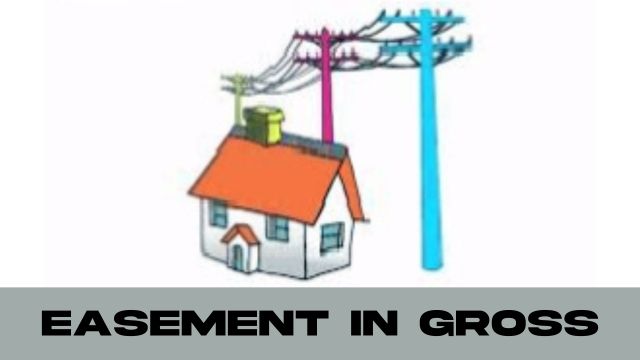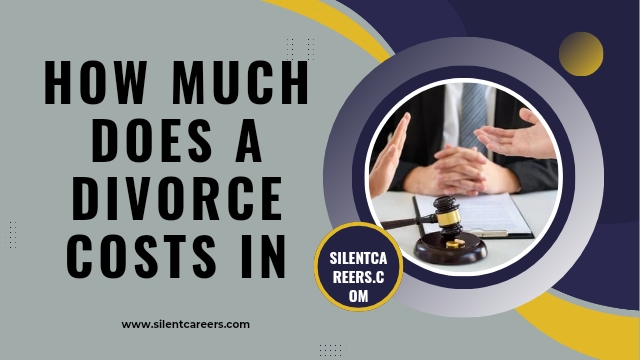
An easement in gross is a legal right that grants an individual or entity the non-possessory right to use another person’s land for a specific purpose. Unlike an easement appurtenant, which is attached to a particular piece of land, an easement in gross is attached to the person or entity itself. This means that the easement can be transferred to another person or entity, even if they do not own the land to which the easement is attached.

What Is an Easement in Gross?
An easement in gross is a type of easement that benefits an individual or entity rather than a parcel of land. Unlike appurtenant easements, which are tied to the land and transfer with property ownership, an easement in gross is personal to the holder and does not necessarily transfer when the property is sold.
Key Characteristics of Easements in Gross:
- Personal Benefit:
- The easement benefits a person or entity (the easement holder) rather than a neighboring property.
- Common holders include utility companies, individuals, or organizations.
- Non-Transferable:
- Easements in gross are typically non-transferable unless explicitly stated otherwise.
- They do not automatically pass to new property owners when the land is sold.
- Types:
- Commercial Easements in Gross: Often held by utility companies for purposes like laying power lines, water pipes, or telecommunications infrastructure. These can be transferable.
- Personal Easements in Gross: Granted to individuals for personal use, such as access to a fishing pond. These are usually non-transferable.
- Duration:
- The duration of an easement in gross can be perpetual, for a specified term, or for the lifetime of the easement holder.
- Some easements in gross can be terminated upon the occurrence of a specific event or condition.
- Usage:
- The holder of the easement in gross has the right to use the property for a specific purpose, such as accessing utilities, maintaining infrastructure, or other agreed-upon uses.
- The easement does not grant ownership of the land, only the right to use it in a particular way.
Understanding an Easement in Gross
An easement in gross is a specific type of easement that benefits an individual or entity rather than a parcel of land. It grants the holder certain usage rights over another person’s property without conferring ownership. Understanding this concept is crucial for property owners and potential easement holders to ensure proper management and legal compliance.
Key Aspects of an Easement in Gross
1. Nature and Purpose
- Personal Benefit: Unlike appurtenant easements, which benefit a neighboring property, an easement in gross benefits an individual or organization. The right is tied to the person or entity, not the land.
- Usage Rights: Common uses include utility companies installing and maintaining infrastructure, access for maintenance or recreational purposes, and conservation efforts.
2. Examples
- Utility Easements: Utility companies may hold easements in gross to run power lines, water pipes, or gas lines across a property.
- Access Easements: An individual might have an easement in gross to cross a neighbor’s land to access a lake or other specific site.
- Conservation Easements: Organizations may hold easements to protect natural resources, ensuring land remains undeveloped or conserved for ecological purposes.
3. Creation and Documentation
- Written Agreement: Easements in gross are typically created through a written agreement or deed that specifies the rights and obligations of the holder and the property owner.
- Legal Recording: Proper recording of the easement in public records is essential to ensure enforceability and to notify future property owners of its existence.
4. Transferability and Duration
- Personal vs. Commercial: Personal easements in gross generally are non-transferable and end with the holder’s death. Commercial easements, such as those held by utility companies, may be transferable.
- Duration: Easements in gross can be perpetual, limited to a specific term, or contingent on the holder’s lifetime or the existence of a particular condition.
5. Rights and Responsibilities
- Holder’s Rights: The easement holder has the right to use the property for the specified purpose, such as laying utility lines or accessing a specific area.
- Owner’s Rights: The property owner retains ownership and can use the land as long as it does not interfere with the easement holder’s rights.
6. Legal Considerations
- Compliance: Both parties must comply with the terms outlined in the easement agreement. Disputes can arise if either party oversteps or neglects their obligations.
- Termination: Easements in gross can be terminated by mutual agreement, abandonment, expiration of the term, or fulfillment of a specific condition outlined in the easement agreement.
Benefits and Challenges
Benefits
- Utility and Infrastructure: Easements in gross facilitate essential services and infrastructure maintenance.
- Conservation Efforts: Enable conservation organizations to protect natural resources and habitats.
- Access and Use: Provide individuals and entities with necessary access for specific purposes without owning the land.
Challenges
- Property Value Impact: Easements can affect property values and marketability.
- Legal Disputes: Potential for disputes over the extent of rights and responsibilities.
- Maintenance and Liability: Responsibility for maintenance and liability issues may be a point of contention between the holder and property owner.
How Does An Easement In Gross Work?
An easement in gross is a legal right that allows an individual or entity to use another person’s property for a specific purpose without owning it. This type of easement benefits a person or organization rather than a parcel of land. Here’s how an easement in gross works:
Creation of an Easement in Gross
- Agreement:
- The easement in gross is typically created through a written agreement or deed between the property owner (grantor) and the individual or entity holding the easement (grantee).
- The agreement outlines the specific rights granted, the purpose of the easement, and any terms or conditions.
- Documentation and Recording:
- The easement agreement should be properly documented and recorded in public land records to ensure enforceability and to notify future property owners of its existence.
Function and Use
- Usage Rights:
- The grantee has the right to use the property for the specified purpose outlined in the easement agreement. This could include access for utility lines, maintenance, or recreational activities.
- The property owner retains ownership and can use the land as long as it does not interfere with the grantee’s rights.
- Types of Easements in Gross:
- Commercial Easements: Often held by utility companies for infrastructure like power lines, pipelines, or telecommunications. These easements can be transferable.
- Personal Easements: Granted to individuals for personal use, such as access to a pond or private road. These are generally non-transferable and may end with the grantee’s death.
Legal and Operational Aspects
- Non-Transferability:
- Personal easements in gross are usually non-transferable and do not run with the land. When the grantee dies or no longer needs the easement, it typically terminates.
- Commercial easements in gross, particularly those held by utility companies, may be transferable to another entity.
- Duration:
- Easements in gross can be perpetual, for a specified term, or for the lifetime of the grantee. The duration is defined in the easement agreement.
- Rights and Responsibilities:
- The grantee must use the property in accordance with the terms of the easement. Any overuse or misuse could result in legal disputes.
- The property owner must respect the grantee’s rights and cannot obstruct the permitted use.
Example of an Easement in Gross
An easement in gross is a specific right granted to an individual or entity to use another person’s land for a particular purpose, and it is not tied to owning any parcel of land. Here are some detailed examples to illustrate how easements in gross work:
Example 1: Utility Easement
Scenario: A power company, PowerGrid Utilities, needs to install and maintain power lines across multiple properties to provide electricity to a region.
Easement Agreement:
- Grantor: Property owner (Mr. Smith)
- Grantee: PowerGrid Utilities
- Purpose: To install, maintain, and repair power lines and poles across Mr. Smith’s property.
- Terms: PowerGrid Utilities can access the property to perform necessary work but must minimize disruption and restore any disturbed land after maintenance.
Key Points:
- The easement is in gross because it benefits PowerGrid Utilities, not a specific piece of land.
- It is likely transferable if PowerGrid Utilities sells its infrastructure or rights to another utility company.
- The easement is typically perpetual or long-term to ensure continuous utility service.
Example 2: Personal Access Easement
Scenario: Ms. Johnson owns a piece of land with a beautiful pond that Mr. Brown, a neighbor, enjoys fishing in. Mr. Brown does not own adjacent land that would qualify for an appurtenant easement but wishes to have legal access to the pond.
Easement Agreement:
- Grantor: Ms. Johnson
- Grantee: Mr. Brown
- Purpose: To allow Mr. Brown to access the pond for recreational fishing.
- Terms: Mr. Brown can cross Ms. Johnson’s property to reach the pond, but he must notify her before visiting and respect her property by not causing damage.
Key Points:
- The easement is in gross because it benefits Mr. Brown personally.
- It is non-transferable and will terminate upon Mr. Brown’s death or if he no longer needs or uses the easement.
- The terms specify how and when Mr. Brown can use the easement to ensure Ms. Johnson’s property rights are respected.
Example 3: Conservation Easement
Scenario: A conservation organization, GreenEarth Trust, aims to preserve a piece of land with significant wildlife habitats and ecological features owned by Mrs. Davis.
Easement Agreement:
- Grantor: Mrs. Davis
- Grantee: GreenEarth Trust
- Purpose: To protect and preserve the land’s natural state by restricting certain types of development and land use.
- Terms: Mrs. Davis retains ownership but agrees not to engage in activities like logging, construction, or extensive farming. GreenEarth Trust can access the land to monitor compliance and conduct conservation activities.
Key Points:
- The easement is in gross because it benefits GreenEarth Trust’s mission rather than a specific adjacent property.
- It is likely transferable to another conservation organization if GreenEarth Trust ceases to exist or passes its responsibilities.
- The easement ensures long-term preservation efforts, typically lasting in perpetuity.
Rights Under an Easement in Gross
An easement in gross grants specific rights to the holder, allowing them to use another person’s land for a particular purpose. The rights and obligations associated with an easement in gross vary based on the easement agreement’s terms. Here’s an overview of the typical rights under an easement in gross:
Rights of the Easement Holder
- Use of Property for Specific Purpose:
- The holder has the right to use the property for the purpose specified in the easement agreement. This could include installing and maintaining utility lines, accessing a water body, or engaging in conservation activities.
- Access:
- The holder has the right to enter the property as necessary to exercise their easement rights. This includes the right to access the property at reasonable times and in a manner that minimizes disruption to the property owner.
- Maintenance and Repair:
- The holder is typically responsible for maintaining and repairing any structures or installations related to the easement. For example, a utility company must maintain power lines or pipelines placed on the property.
- Exclusive or Non-Exclusive Use:
- Depending on the easement agreement, the holder may have exclusive use of a portion of the property (e.g., an area where only the utility company can install infrastructure) or non-exclusive use, allowing the property owner to continue using the land as long as it does not interfere with the easement holder’s rights.
- Transferability:
- For commercial easements in gross, the holder may have the right to transfer the easement to another entity. This is common for utility companies that might sell their infrastructure rights to another provider.
- Personal easements in gross are generally non-transferable and terminate upon the death of the holder.
Responsibilities and Limitations of the Easement Holder
- Minimizing Disruption:
- The holder must use the property in a manner that minimizes disruption and damage. For example, a utility company must restore the property to its original condition after performing maintenance work.
- Compliance with Terms:
- The holder must comply with all terms and conditions specified in the easement agreement, including any restrictions on use, hours of access, and maintenance obligations.
- Notification:
- The holder may be required to notify the property owner before accessing the property, especially if the access involves significant activities such as excavation or construction.
- Environmental and Safety Standards:
- The holder must comply with applicable environmental and safety regulations, ensuring that their use of the property does not pose hazards or cause environmental damage.
Rights of the Property Owner
- Continued Use:
- The property owner retains the right to use their property as long as it does not interfere with the easement holder’s rights. For example, they can continue farming or recreational activities around the utility lines.
- Compensation for Damages:
- If the easement holder causes damage to the property beyond the agreed terms, the property owner may have the right to seek compensation for repairs or losses incurred.
- Termination of Easement:
- The property owner can terminate the easement if the holder fails to comply with the terms of the agreement, abandons the easement, or if the specific conditions for termination outlined in the agreement are met.
Legal Considerations
- Enforceability:
- The rights and obligations under an easement in gross must be clearly outlined in a written agreement and properly recorded to ensure enforceability and to inform future property owners of the easement.
- Dispute Resolution:
- The easement agreement should include provisions for resolving disputes, such as mediation or arbitration, to address any conflicts that arise between the holder and the property owner.
Other common types of easements
Several common types of easements exist beyond easements in gross, each serving distinct purposes and benefiting different parties:
- Easement Appurtenant:
- Benefits a specific parcel of land (dominant tenement) and burdens another (servient tenement). It typically provides access or utility services. This type runs with the land, transferring with property ownership.
- Prescriptive Easement:
- Acquired through continuous, open, and notorious use of land without permission for a statutory period. This type is similar to adverse possession but grants use rights instead of ownership.
- Easement by Necessity:
- Arises when a landlocked property requires access to a public road or utility. It is essential for the reasonable use of the land.
- Easement by Implication:
- Created when a property is divided, and there’s a long-standing, apparent use that is reasonably necessary for the enjoyment of the dominant parcel.
- Conservation Easement:
- Granted to a land trust or government entity to preserve natural resources, restrict development, and protect the land’s ecological or historical value.
Understanding these easements helps property owners and potential buyers manage property use and legal rights effectively.
Easements Appurtenant
An easement appurtenant benefits a specific parcel of land (the dominant tenement) and burdens another (the servient tenement). It grants the dominant landowner rights such as access or utility services over the servient property. This type of easement is inherently tied to the land, meaning it automatically transfers with property ownership. Common examples include shared driveways, private roads, or paths for access to public areas. Easements appurtenant enhance property utility and value, providing necessary access and services while ensuring legal clarity for both the dominant and servient landowners. Proper documentation and recording are essential for enforceability.
Easement in Gross vs. Easement Appurtenant
Easements in gross and easements appurtenant are two distinct types of easements with different characteristics and purposes:
Easement in Gross
- Beneficiary:
- Benefits an individual or entity rather than a specific parcel of land.
- Transferability:
- Typically non-transferable unless it is a commercial easement (e.g., for utilities), which can be transferred to another entity.
- Attachment:
- Not tied to any particular property. It is personal to the easement holder.
- Examples:
- Utility companies installing and maintaining power lines or pipelines.
- Individuals having access to a fishing pond.
- Duration:
- Can be perpetual, for a specified term, or for the holder’s lifetime.
Easement Appurtenant
- Beneficiary:
- Benefits a specific parcel of land, known as the dominant tenement, and burdens another parcel, the servient tenement.
- Transferability:
- Automatically transfers with the dominant property when it is sold, ensuring the easement continues to benefit the new owner.
- Attachment:
- Tied to the land, meaning the easement is inherently linked to the property itself, not to the property owner.
- Examples:
- Shared driveways providing access to a landlocked property.
- Pathways or private roads allowing access to public areas.
- Duration:
- Typically perpetual, remaining in effect as long as the dominant and servient properties exist in their current form.
Key Differences
- Purpose and Benefit: Easements in gross benefit individuals or entities without regard to land ownership, whereas easements appurtenant benefit specific parcels of land.
- Transferability: Easements in gross usually do not transfer with land ownership unless they are commercial, while easements appurtenant automatically transfer with the dominant property.
- Attachment: Easements in gross are personal to the holder, while easements appurtenant are inherently linked to the land they benefit and burden.
What Is a Conservation Easement?
A conservation easement is a voluntary, legally binding agreement that permanently restricts the development and use of a property to protect its natural, scenic, agricultural, or historical values. Granted to a land trust or government agency, this easement ensures the land remains preserved and protected for future generations.
Key Features:
- Voluntary Agreement: Landowners willingly enter into the easement, tailoring the terms to balance conservation goals with their land use preferences.
- Permanence: Typically perpetual, the easement remains in effect regardless of property ownership changes.
- Ownership Retention: Landowners keep ownership and can sell or pass the land to heirs, but must comply with the easement’s terms.
- Restrictions: Limits activities like building, subdividing, or mining while allowing compatible uses such as farming or recreation.
- Tax Benefits: Landowners may receive tax deductions and property tax reductions for donating a conservation easement.
Conservation easements play a crucial role in preserving natural landscapes, protecting wildlife habitats, and maintaining open spaces.
How Can I Terminate an Easement?
Terminating an easement typically requires specific conditions or actions, depending on the type of easement and applicable laws:
- Mutual Agreement: The easement holder and the property owner can agree to terminate the easement. This usually involves drafting a new agreement or releasing the easement in writing, signed by both parties.
- Expiration of Term: If the easement has a specified duration or condition (such as until a specific project is completed), it terminates automatically at the end of that period or upon fulfillment of the condition.
- Abandonment: Some jurisdictions allow easements to be terminated if the easement holder demonstrates clear intent to abandon their rights and stops using the easement for an extended period without justification.
- Court Order: In certain cases, a court may order termination of an easement if it determines that the easement is no longer necessary or equitable, or if there has been a violation of the easement terms.
- Merger: If the dominant and servient estates come under the same ownership (e.g., through purchase), the easement may be extinguished due to merger of the properties.
Terminating an easement usually requires legal consultation to ensure compliance with applicable laws and to resolve any disputes that may arise between the parties involved.
Who Is the Holder of an Easement in Gross?
The holder of an easement in gross is typically an individual, organization, or entity that benefits from the specific rights granted by the easement. Unlike easements appurtenant, which benefit a particular parcel of land, easements in gross are personal to the holder and do not transfer with the property. Common holders include utility companies needing access to install and maintain infrastructure, individuals granted rights to access recreational or natural areas, or conservation organizations preserving land for environmental purposes. The holder is responsible for adhering to the terms outlined in the easement agreement, which specify the permitted use of the property and any obligations related to maintenance or access.
What Is the Difference Between an Easement in Gross and an Easement Appurtenant?
The main difference between an easement in gross and an easement appurtenant lies in who benefits from the easement and how it relates to the property:
- Easement in Gross:
- Beneficiary: The easement in gross benefits a specific individual or entity rather than a particular parcel of land.
- Transferability: It is typically not transferable unless specified otherwise in the agreement (e.g., commercial easements for utilities).
- Attachment: It is personal to the holder and does not transfer with the sale or transfer of property.
- Examples: Utility companies’ rights-of-way, personal access easements, and conservation easements for specific purposes.
- Easement Appurtenant:
- Beneficiary: The easement appurtenant benefits a particular parcel of land (dominant tenement) and burdens another parcel (servient tenement).
- Transferability: It automatically transfers with the dominant property when it is sold or transferred.
- Attachment: It is attached to the land and remains in effect regardless of changes in property ownership.
- Examples: Shared driveways, pathways for access, and rights-of-way benefiting adjacent properties.
Understanding these distinctions helps property owners and buyers navigate legal rights and responsibilities associated with different types of easements.








